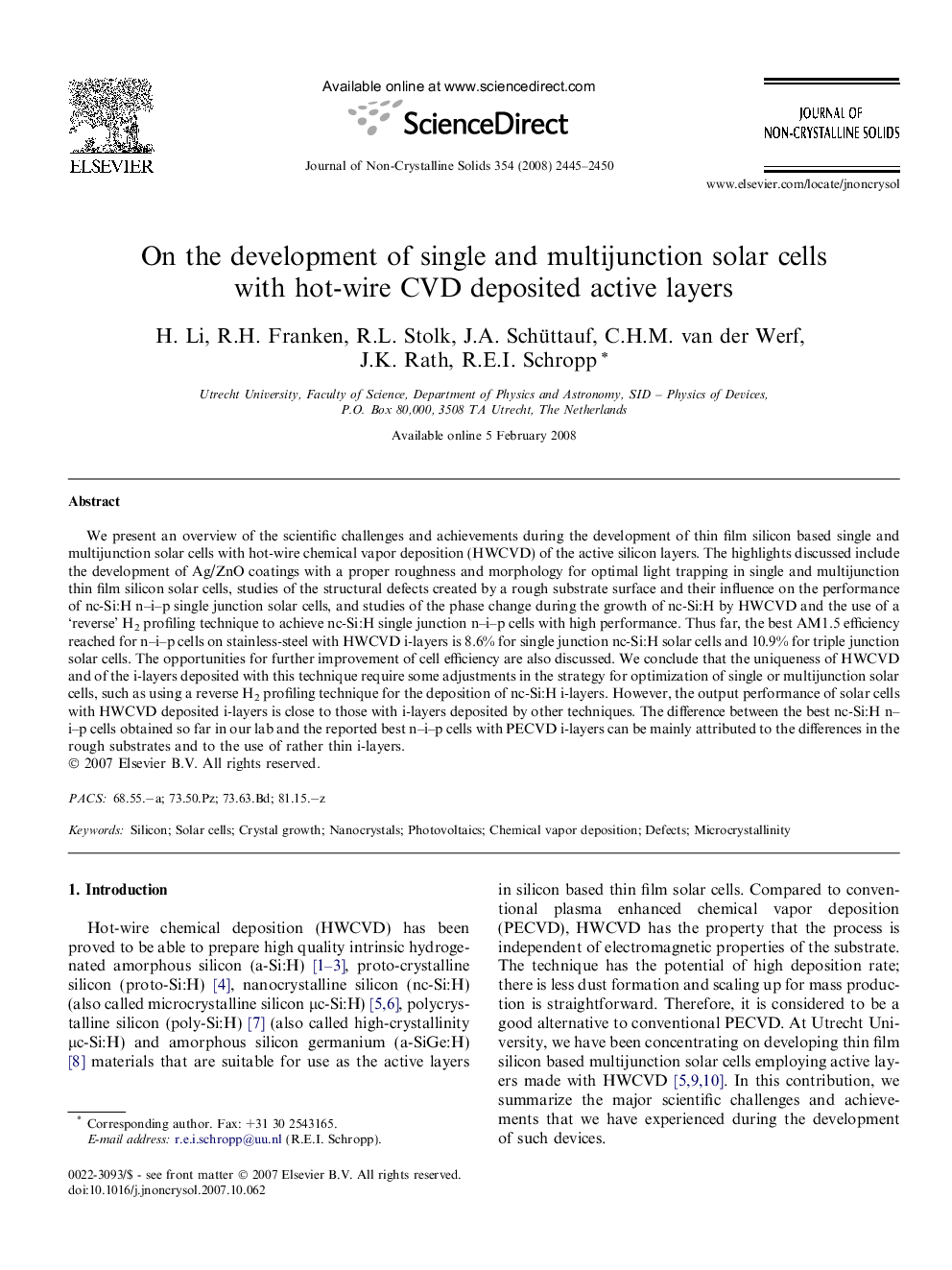| Article ID | Journal | Published Year | Pages | File Type |
|---|---|---|---|---|
| 1484720 | Journal of Non-Crystalline Solids | 2008 | 6 Pages |
We present an overview of the scientific challenges and achievements during the development of thin film silicon based single and multijunction solar cells with hot-wire chemical vapor deposition (HWCVD) of the active silicon layers. The highlights discussed include the development of Ag/ZnO coatings with a proper roughness and morphology for optimal light trapping in single and multijunction thin film silicon solar cells, studies of the structural defects created by a rough substrate surface and their influence on the performance of nc-Si:H n–i–p single junction solar cells, and studies of the phase change during the growth of nc-Si:H by HWCVD and the use of a ‘reverse’ H2 profiling technique to achieve nc-Si:H single junction n–i–p cells with high performance. Thus far, the best AM1.5 efficiency reached for n–i–p cells on stainless-steel with HWCVD i-layers is 8.6% for single junction nc-Si:H solar cells and 10.9% for triple junction solar cells. The opportunities for further improvement of cell efficiency are also discussed. We conclude that the uniqueness of HWCVD and of the i-layers deposited with this technique require some adjustments in the strategy for optimization of single or multijunction solar cells, such as using a reverse H2 profiling technique for the deposition of nc-Si:H i-layers. However, the output performance of solar cells with HWCVD deposited i-layers is close to those with i-layers deposited by other techniques. The difference between the best nc-Si:H n–i–p cells obtained so far in our lab and the reported best n–i–p cells with PECVD i-layers can be mainly attributed to the differences in the rough substrates and to the use of rather thin i-layers.
